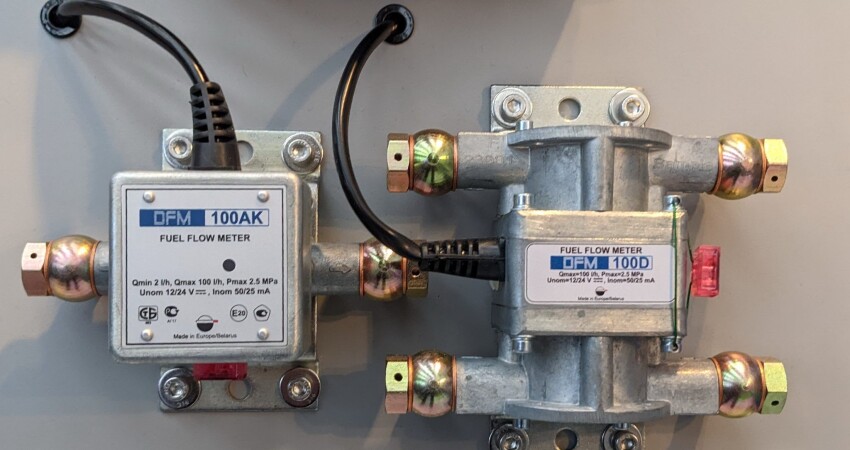The New Hampshire-based technology company, Airmar, is best known for the transducers many commercial fishermen rely on—with most sonar and sounder manufacturers using at least some Airmar product. Now the company is broadening its product line with its its new Smart Flex Diesel Flow Meter (DFM), as a component of its existing SmartBoat monitoring systems, and a SmartBoat system is required to process the information from the DFM.
It has been observed that when drivers can see how much fuel they’re using, they tend to use less, and it might be safe to assume the same for fishing vessel operators.
“Our flow meter is a dual chamber meter,” says Zack Floyd of the Airmar brand Gemeco. “So, where you once needed two meters, on to measure the flow to the engine and one to measure the return, with ours you just need one, and it measures both, and that can be about 20 to 30 percent cheaper.”
Another advantage Floyd points out is that for no additional expense a vessel can tie its tankage into the same SmartBoat box as the flow meter. “So now they’re getting levels and flow going into the same box,” says Floyd. “It doesn’t matter what kind of sensor you have on your tanks, current or voltage based, we can wire the gauge into the box, and with NMEA2000 all that information comes out—your fuel usage and tank levels—and can be displayed on your MFD.”
The SmartFlex DFM is designed for vessels burning up to 600L (159 gallons) per hour. “A 500 to 600-hp engine,” says Floyd. He acknowledges that finding the sweet spot of fuel consumption will be a process of trial and error on the part of the vessels operator. “You may find you’re burning 40 gallons an hour running at 1800 rpm, and 32 gallons if you throttle back to 1500.” But he points out, the operator would be working with real numbers. “Metering is better than guessing,” says Floyd. “Many existing fuel usage monitors rely on algorithms based on new engine performance. That’s fine for the early life of the engine, but when it gets older those numbers may not be accurate.”
As far as metering is concerned, Floyd contends that Airmar’s DFM, with its slipring mechanism for measuring flow, is the most accurate and durable available. “Other brands use paddlewheels and gears to measure flow, and those can suffer from wear on the bearings and getting clogged with dirty fuel. The slip ring doesn’t have those problems.”
While the DFM has not yet caught on in the commercial fishing industry, Floyd believes it is only a matter of time. “You can equip a boat with two 600-hp engines with two flow meters for under $3,000 dollars,” he says. “It depends on how your run your boat, but if this enables you to find that sweet spot of torque by dropping your rpms, or raising them, and you can save 10 or 15 percent on fuel, if you’r burning 500 gallons a day and you save 50, that’s close to $200. You could see your payback in a matter of months.”







